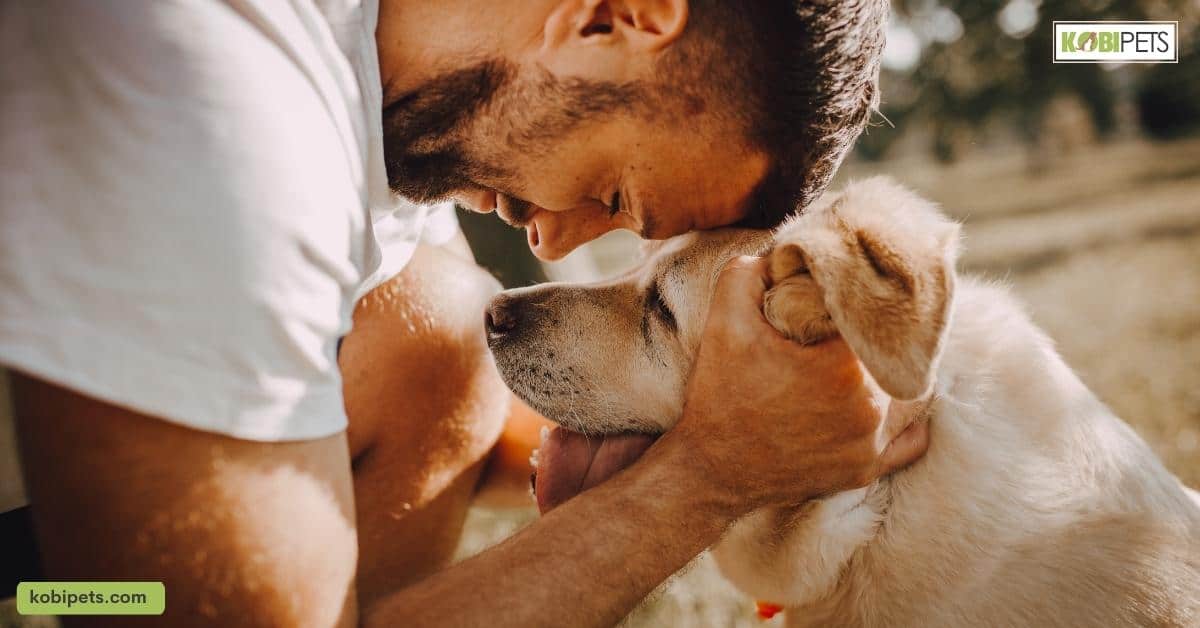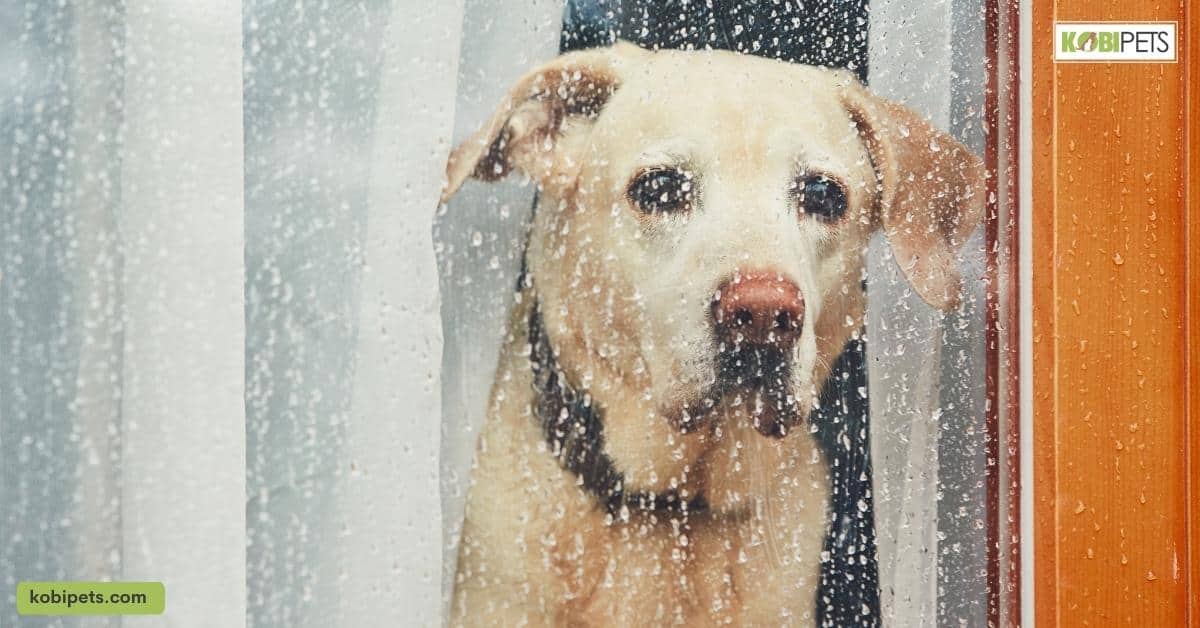Separation anxiety in dogs is a challenging and often heartbreaking issue for many pet owners. It can manifest in various ways, from destructive behavior to persistent barking or whining when left alone. However, with patience, understanding, and the right strategies, you can help your beloved four-legged friend cope during your absence.
Overcome your dog’s separation anxiety with our comprehensive guide. Learn to spot symptoms, understand why they occur, and discover effective strategies like behavior modification, exercise, and interactive toys. Explore the benefits of professional help when needed, as recovery is completely possible with patience, care, and consistency.
What Is Dog Separation Anxiety?
Dog separation anxiety is a condition where a dog exhibits distress and behavior problems when separated from its owner. It can manifest in a variety of ways, including excessive barking, destructive behavior, and attempts to escape.
This condition is often triggered by changes in routine, environment, or the sudden absence of a family member. It’s important to understand that this is a panic response, not a way for the dog to ‘punish’ the owner for leaving.
Treatment usually involves gradual desensitization to the owner’s departure, along with positive reinforcement for calm behavior. It may also require professional help.
Does My Dog Have Separation Anxiety?
Before launching into behavioral modifications or medication, a crucial first step in managing your dog’s separation anxiety is a thorough veterinary exam. This helps distinguish if the symptoms are indeed due to anxiety or stem from other medical or behavioral problems.
Getting to the root cause will pave the way for the right treatment plan and set your pet on a path to comfort and peace. Let’s delve into why and how a veterinary examination should be conducted.
Ruling Out Other Possible Causes
Before concluding that your dog is suffering from separation anxiety, it’s crucial to rule out other potential causes for their behavior. Your pet’s actions could be a response to various health or behavioral issues unrelated to anxiety. Here are a few situations where similar symptoms might occur:
- Medical Issues: Problems such as a fractured tooth or a urinary tract infection can lead to behaviors often associated with separation anxiety. For instance, excessive drooling or frequent accidents could be signs of these medical conditions.
- Territorial Responses: Dogs are naturally territorial creatures. Barking or destructive behavior might not necessarily indicate separation anxiety but could be your pet responding to perceived threats in their territory.
- Incomplete House Training: Accidents inside the house can sometimes be misconstrued as a sign of separation anxiety. However, they might just indicate that your dog needs further house training.
Recognizing the Signs of Separation Anxiety in Dogs
Identifying the signs of separation anxiety in your dog is an essential step in managing this condition. Here are some symptoms to watch out for:

Recognizing the Signs of Separation Anxiety in Dogs
- Pacing: Dogs suffering from separation anxiety may repeatedly walk back and forth, showing a clear sign of distress.
- Vocalization: Persistent barking or howling when left alone could indicate that your dog is feeling anxious about your departure.
- Loss of Appetite: If your dog seems to ignore treats and food when you’re not around, this could be a sign of separation anxiety.
- Destruction: Dogs experiencing separation anxiety may resort to destroying household items, or even large-scale destruction like tearing through furniture, walls, doors, or windows.
- Elimination: House-trained dogs might have accidents when left alone. This could include unusual instances of diarrhea.
- Drooling: Excessive drooling, resulting in a soaked chin and chest, might be another sign of a dog experiencing separation anxiety.
- Escape Attempts: Dogs with intense separation anxiety might try to escape confinement, leading to potential injuries.
By recognizing these signs, you can better understand your pet’s needs and take the necessary steps to alleviate their anxiety.
How to Help a Dog With Separation Anxiety
When it comes to managing your dog’s separation anxiety, sometimes home remedies and tactics might not be enough. In more serious cases, the expertise of a professional can make a significant difference.
This section will guide you through the benefits and process of seeking professional help to manage your dog’s separation anxiety.
Behavior Modification
Managing separation anxiety in dogs is a complex and often lengthy process. To best support your dog during this journey, it’s essential to become familiar with the various treatments available, along with advice from certified professionals like CSATs or veterinary behaviorists.
With patience and understanding, you can nurture your beloved pup and help them get back to feeling safe, secure, and relaxed even when you’re away. Behavior modification is one such therapy that can be highly effective in alleviating anxiety.
Don’t Leave Your Dog Alone for Long
Giving your pup a safe, secure environment is key in managing their separation anxiety. That’s why when it comes to implementing behavior modification, it’s essential to start slow and build up as you go.
Allowing your dog adequate time to adjust to each step of the process will help them cope better in the long run. The gradual reintroduction of activities and environments that used to cause distress will help them gain confidence in their new routine.
Exercise Your Dog
Separation anxiety in dogs can be a difficult issue to manage and requires patience, understanding, and effort. While it may take some time for your pup to get used to being apart from you, the right strategies and tactics can make a significant difference.
From regular exercise and interactive toys to behavior modification techniques or even pet prescription medication, there are various remedies that could help alleviate your pup’s anxiety.
Give Your Dog Interactive Toys
Treating separation anxiety in dogs can be a long and challenging process, but it’s important to understand that most cases are very treatable.
With patience, dedication, and the right strategies for your pet—such as exercise, interactive toys, behavior modification techniques, or prescribed medication – you can help make a world of difference in your pup’s life.
Remember that there’s no quick-fix solution for separation anxiety, and some cases may require expert help. Get in touch with a certified professional such as a CSAT or veterinary behaviorist to ensure that your dog gets the best care possible.
Use Pet Prescription Medication
While curing your dog’s separation anxiety can take time, it is entirely possible with the right amount of care and support. Separation anxiety in dogs isn’t a punishment for leaving them alone—it is a panic response that requires patience, understanding, and the help of professionals to treat.
From regular exercise to interactive toys and even prescribed medication, there are various remedies you can use to help alleviate your pup’s anxiety and bring them comfort.
In more serious cases, pet prescription medication might be necessary to provide extra relief.
Fixing Separation Anxiety One Step at a Time
Treating separation anxiety in dogs is not an overnight process. It necessitates patience, compassion, and consistency.

Fixing Separation Anxiety One Step at a Time
- Gradual Exposure: Start by leaving your dog alone for very short periods and gradually increase the duration as it becomes more comfortable.
- Positive Reinforcement: Always reward calm behavior with treats and praises to help your dog associate your departure with positive feelings.
- Create a Safe Space: Make a comfortable and secure spot for your dog where they can retreat when feeling anxious.
- Consistent Routines: Maintaining a regular routine can greatly help in reducing your dog’s anxiety as predictability can evoke a sense of security.
- Professional Help: If the symptoms persist, don’t hesitate to seek help from professionals. A certified separation anxiety trainer or a veterinary behaviorist can provide personalized treatment plans tailored to your dog’s specific needs.
In conclusion
In the journey to help your dog overcome separation anxiety, remember that every small step forward is a massive victory. It’s a slow, gradual process that demands patience, understanding, and consistency.
Your efforts can make a significant difference in your pet’s life, transforming their fear and distress into comfort and contentment. Whether it’s through therapeutic strategies like behavior modification, consistent routines, and exercise, or seeking the help of professionals, you’re not alone in this journey.
Your furry friend’s recovery is entirely possible, and with your love and support, they can regain their sense of security and happiness.













